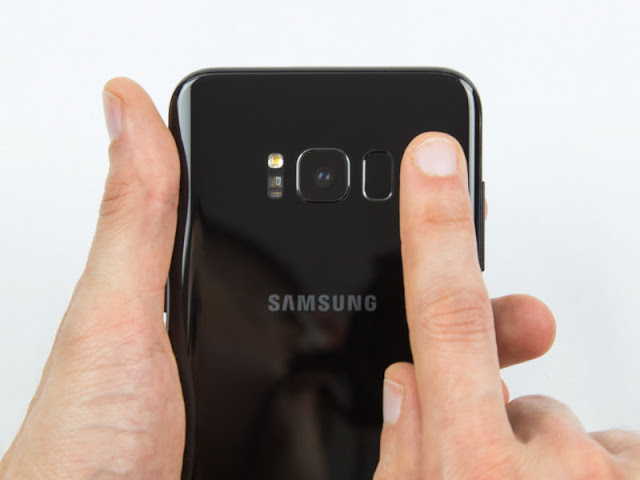The next wave of fingerprint readers on smart devices could be more inconspicuous than they are now. Earlier this year, Synaptics announced a new range of fingerprint sensors that can be integrated under polymers, ceramics, and glass, potentially providing more functions to Android soft buttons. Rumor has it that Apple has also been experimenting specifically with under-display fingerprint readers, and that's the area that Qualcomm has been focusing on as well. At Mobile World Congress Shanghai, the chip maker showed off its first ultrasonic-based, under-display fingerprint sensors in a prototype of the existing Vivo Xplay6 smartphone.
The technology built into this prototype allows the bottom-third of the smartphone's display to act as the fingerprint reader and unlock the device. As demonstrated in a hands-on demo by Engadget, you simply press your thumb to the display and the device unlocks within a second or so of reading your fingerprint. It doesn't appear to be a speedy as traditional smartphone fingerprint sensors, but that's not surprising since the technology is still in its infancy and hasn't yet been incorporated into any consumer devices.
According to Vivo, the technology could be built out so the entire display could act as a fingerprint sensor. However, that will up the production costs dramatically. Engadget's report says that Vivo could eventually spread the technology through the bottom half of the display rather than just a small portion close to the bottom edge.
Qualcomm lays out the parameters for its "Fingerprint Sensor for Display" technology in a press release: it's built to detect fingerprints through OLED displays up to 1200µm, while its "Fingerprint Sensors for Glass and Metal" technology can detect input through cover glass up to 800µm and through aluminum up to 650µm.
The technology is built to better identify fingerprints even when obstructed with dirt or sweat, and it can be used underwater as well. Engadget tested what appears to be an under-metal fingerprint sensor on a submerged smartphone. This sensor, placed on the back of the handset, unlocked the device and immediately opened the camera app.
Qualcomm's under-display fingerprint technology certainly looks promising, but it has a long way to go before it replaces the ubiquitous traditional fingerprint readers. Speed will certainly be an issue to work on going forward, as will the ideal spacial implementation. A smartphone that has an entire display ready to unlock at the slightest touch of your thumb is hardly safe or convenient, so OEMs will have to experiment to find the best fingerprint sensor-to-display ratio that's both practical and cost-effective. Qualcomm's new glass and metal fingerprint sensor technology is slated to be available to OEMs later this month, while the display technology won't ship to OEMs until the fourth quarter of 2017.

Post a Comment